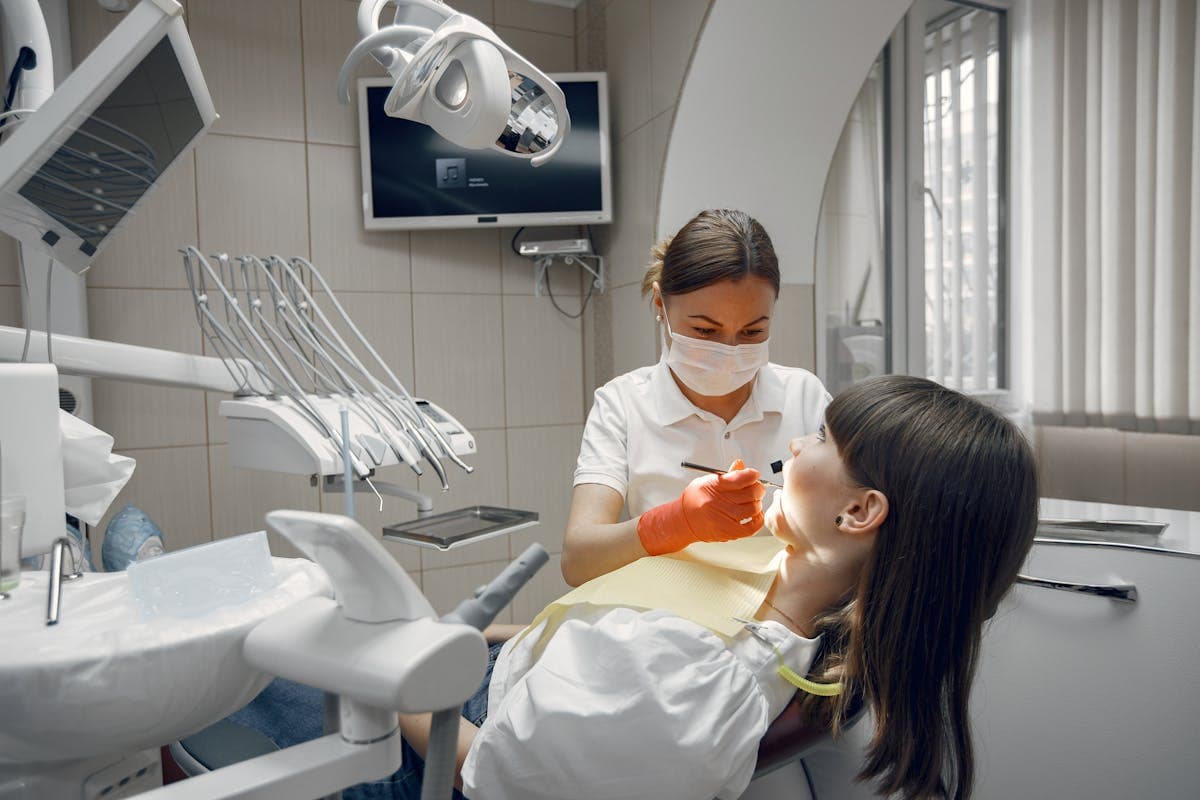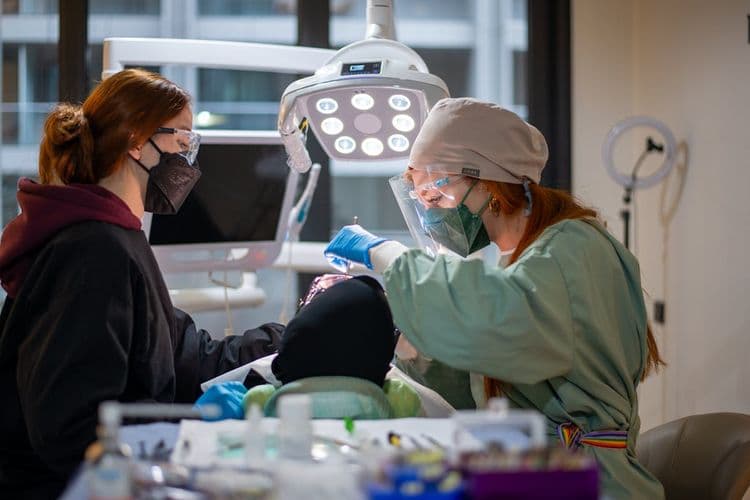The rapid advancement in dental science has led to the emergence of Laser Periodontal Therapy, a cutting-edge treatment for periodontal disease. This technique utilizes laser technology to target and eliminate diseased tissue, fostering faster healing and causing less distress to the patient compared to traditional surgery. As we explore this topic further, we shall consider its effectiveness, safety, and compare it to conventional treatment methods. Ultimately, the question remains: does this innovative approach to periodontal care signify a new era in dentistry?
Understanding Periodontal Disease
Periodontal disease, commonly known as gum disease, is a serious oral health issue that affects a significant portion of the population. This condition is characterized by gum inflammation and plaque buildup, both of which contribute to the degradation of oral health. When left untreated, periodontal disease can lead to tooth loss and other complications. In the early stages, symptoms may include redness, swelling, and bleeding of the gums. As the disease progresses, pockets may form between the gums and teeth as the gum tissue begins to recede. This creates an environment conducive to further plaque buildup and bacterial infection, exacerbating the gum inflammation and causing further damage to the periodontal structures.
The Evolution of Dental Treatments
Over the centuries, dental treatments have undergone significant transformations to adapt to the evolving understanding of oral health conditions and technological advancements. Initial historical treatments were primitive, often involving extraction without anesthesia or sterilization. The advent of anesthetics and the discovery of the correlation between bacteria and oral diseases revolutionized dental care in the 19th century. The 20th century saw further dental innovations, including the development of fluoride treatments, dental implants, and, importantly, dental lasers. These changes reflect not only advancements in technology but also a shift in focus from treatment to prevention, with an emphasis on regular dental care and hygiene. This evolution has culminated in today’s sophisticated procedures, such as laser periodontal therapy.
What Is Laser Periodontal Therapy?
Laser periodontal therapy, a cutting-edge dental procedure, leverages the precision and efficacy of laser technology to treat periodontal disease. This non-invasive procedure is a notable development in the field of periodontics, improving gum health and mitigating the discomfort associated with traditional surgical methods.
The process entails:
- Targeting the affected area with a laser to eradicate diseased tissue, minimizing damage to healthy gums.
- The laser’s accuracy results in less bleeding and swelling post-procedure, enhancing patient comfort.
- Utilizing the laser’s sterilizing effect, the risk of infection is considerably reduced, promoting faster healing.
Laser periodontal therapy marks a considerable advance in dentistry, offering a highly effective and patient-friendly alternative to conventional treatments and marking a new era for gum health management.
Comparing Lasers and Traditional Surgery
While both laser periodontal therapy and traditional surgical methods aim to treat periodontal disease, the two techniques boast considerable differences. Traditional surgery requires incisions and sutures, which can cause discomfort, longer healing times, and potential complications. These are some surgery drawbacks that laser therapy mitigates. With laser therapy, the precision of the laser allows for minimally invasive treatment. The laser advantages include less damage to surrounding tissues, reduced bleeding, and quicker recovery times. Additionally, laser therapy often eliminates the need for anesthesia, reducing another potential risk associated with traditional surgery. However, it is crucial to understand that the effectiveness of both methods can depend on the severity of the disease and the skill of the practitioner. Neither approach is universally superior; each has its own strengths and limitations.
Key Benefits of Laser Treatment
In light of its technological sophistication, laser periodontal therapy offers significant benefits that make it a desirable treatment option for many patients. A benefit overview reveals distinct treatment advantages, such as minimal invasiveness, superior comfort, and expedited healing.
- Minimal Invasiveness: Laser technology enables precise targeting of diseased tissues, leaving healthy gums intact. This reduces trauma and postoperative discomfort.
- Superior Comfort: With lasers, there’s less bleeding, swelling, and pain during and after the procedure, enhancing the patient’s experience.
- Expedited Healing: The laser’s sterilizing effect reduces the risk of infection, promoting quicker recovery.
Effectiveness and Safety
Despite the promising benefits of laser periodontal therapy, its effectiveness and safety remain vital to its adoption across the dental industry. The hallmark of this therapy is laser precision, which allows for targeted removal of diseased tissue, minimizing damage to healthy periodontal structures. This precision contributes greatly to the positive treatment outcomes observed in numerous clinical studies. Additionally, laser periodontal therapy is associated with minimal bleeding, reduced post-operative discomfort, and low risk of infection, affirming its safety profile. Nonetheless, the skill and experience of the dental professional conducting the therapy are essential to guarantee these outcomes. Thus, proper training in the use of laser devices is fundamental. As research progresses, continuous assessment of effectiveness and safety is indispensable to maintain the credibility and reliability of this therapeutic approach.

Patient Experiences and Recovery
As we shift to discuss patient experiences and recovery post laser periodontal therapy, it is essential to acknowledge the importance of clear patient comprehension of the procedure. A thorough exploration of the post-therapy healing process provides valuable insight into the expected recovery timeline and potential challenges. We will also investigate strategies for managing discomfort, an important element in ensuring ideal patient comfort and satisfaction.
Understanding the Procedure
Delving into the domain of laser periodontal therapy, patients often report a distinct experience, markedly different from traditional gum treatment methods. The procedure, highly efficient and less invasive, revolves around laser applications and innovative therapy techniques.
- First, a specific laser wavelength is used to remove the inflamed gum tissue from around the root of the tooth.
- Next, the root’s surface is thoroughly cleaned and smoothened to eliminate any rough spots that might attract bacteria.
- Finally, the area between the gum and the root is sterilized using lasers to prevent further infections.
These steps help guarantee patients experience less pain, swelling, and discomfort, making the recovery process smoother and quicker than older treatment methods.
Post-Therapy Healing Process
Post-therapy healing following laser periodontal treatment is typically characterized by a smoother recovery trajectory compared to traditional gum therapy methods. In the immediate post therapy care phase, patients often report a noticeable reduction in discomfort, swelling, and bleeding. This is largely due to the less invasive nature of the laser procedure, which minimizes tissue trauma and promotes faster healing.
The healing timeline for laser periodontal therapy is generally shorter than conventional methods. The majority of patients experience significant healing within the first week post-treatment, with progressive improvement observed over the following weeks. This expedited recovery often leads to less interruption in daily activities and a faster return to normal oral functions. Overall, the post-therapy healing process is considered one of the key advantages of laser periodontal therapy.
Managing Potential Discomfort
While laser periodontal therapy often results in less discomfort than traditional methods, it is essential to adequately manage any potential pain during the recovery process to secure ideal patient comfort and healing. Clinicians utilize various pain management techniques to guarantee a smooth recovery.
Patient comfort strategies may include the following:
- Prescription of Analgesics: Over-the-counter or prescription pain relievers are commonly used to manage post-therapy discomfort.
- Cold Compress Application: This method can help reduce swelling and alleviate pain.
- Guidance on Dietary Adjustments: Soft, non-irritating foods can help minimize discomfort during the healing process.
Future of Laser Periodontal Therapy
As we look to the horizon of laser periodontal therapy, advancements in laser technology are expected to bring significant therapeutic improvements. These enhancements will likely lead to more efficient treatment methods, thereby positively impacting overall periodontal health. The continual evolution of this field promises a future where laser periodontal therapy becomes more precise, less invasive, and increasingly effective.
Advancements in Laser Technology
Despite the significant progress already achieved in laser periodontal therapy, the future holds substantial promise due to advancements in laser technology. Technological innovations have allowed for greater laser precision, not only in targeting specific areas of the mouth but also in controlling the depth of treatment, thereby reducing unnecessary damage to healthy tissues.
- Improved Precision: Advanced lasers can accurately target diseased tissues, leaving healthy ones intact.
- Controlled Depth: The latest laser technologies can adjust penetration depth, minimizing potential damage.
- Advanced Devices: Innovations have led to compact, user-friendly devices, enhancing practitioners’ control and maneuverability.
These advancements are continually reshaping the landscape of periodontal therapy, promising safer, more efficient, and effective treatments for patients.
Predicted Therapeutic Improvements
Building on the recent advancements in laser technology, the future of laser periodontal therapy is anticipated to bring about significant therapeutic improvements. These advancements are expected to further refine the precision and efficacy of treatments, leading to enhanced therapeutic outcomes. Future laser technology will likely be more adept at targeting and eradicating periodontal pathogens, thereby reducing the likelihood of disease recurrence. Additionally, the integration of laser technology in periodontal therapy is expected to meet patient expectations regarding less invasive treatments, minimized discomfort, and quicker recovery periods. As laser technology continues to evolve, its application in periodontal therapy will increasingly become a benchmark for therapeutic success, patient satisfaction, and overall improvement in the quality of periodontal care.
Impact on Periodontal Health
While the focus on the future of laser periodontal therapy often centers around technological advancements, it is equally imperative to contemplate its potential impact on periodontal health.
- Accelerated gum regeneration: Advanced laser therapies have shown promise in encouraging gum tissue regeneration, improving oral health and reducing recovery time post-procedure.
- Enhanced bone health: Laser periodontal therapy could stimulate bone regeneration in periodontally affected areas, potentially reducing the necessity for invasive surgical procedures.
- Decreased risk of disease recurrence: By thoroughly eliminating pathogenic bacteria, laser therapy may reduce the risk of periodontal disease recurrence, contributing to long-term oral health.
In essence, the future of laser periodontal therapy could greatly enhance gum regeneration and bone health while promoting a more robust and enduring periodontal health status.
Frequently Asked Questions
Does Insurance Typically Cover Laser Periodontal Therapy?
Insurance coverage varies greatly depending on the provider and the specific policy. While some insurance plans may cover a portion of advanced treatment options, others may not. It’s essential to verify with your insurer directly.
What Is the Cost of Laser Periodontal Therapy Compared to Traditional Surgery?
When comparing costs, traditional surgery often proves more expensive due to longer recovery periods. The treatment benefits, such as reduced discomfort and healing time, further enhance the cost-effectiveness of the alternative method under discussion.
Are Multiple Sessions Required for Laser Periodontal Therapy?
The frequency of sessions and overall treatment duration depend on individual cases. Some situations may necessitate multiple appointments, while others can be resolved in a single session. Professional consultation is recommended to establish an accurate treatment plan.
What Kind of Training Do Dentists Need for Performing Laser Periodontal Therapy?
Dentists need specific training to utilize laser technology effectively. This involves extensive dental education and additional laser certification programs, ensuring they understand the intricacies and safety measures associated with this specialized dental treatment technique.
Can Laser Periodontal Therapy Be Used for Children and Teenagers?
Yes, laser therapy can be a suitable treatment for both children and teenagers. With consideration of child dental health and teenage gum care, this less invasive procedure can effectively treat periodontal diseases in these age groups.


